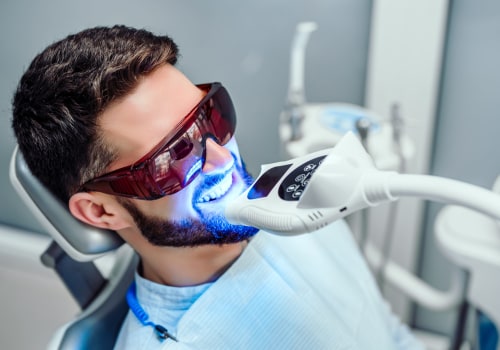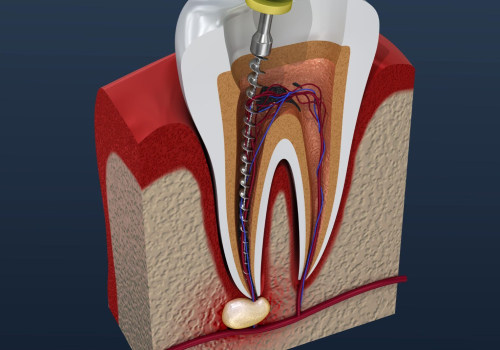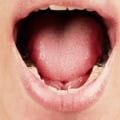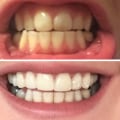Oral cancer is a dangerous and potentially deadly disease that affects millions of people around the world. Early detection is key to getting the best treatment outcomes. This article provides a comprehensive overview of oral cancer screening, which is an important tool for detecting the disease at its earliest stages. Oral cancer screening involves physical examination of the mouth and throat, as well as x-rays, lab tests, and biopsies of any suspicious areas. It is important to understand the risk factors for oral cancer, such as smoking and alcohol use, so that they can be monitored and addressed.
The article will provide an in-depth look at the different types of oral cancer screenings available, as well as their effectiveness and cost. Oral cancer screening is an essential part of preventive care for dental health, and can help save lives. Read on to learn more about this important topic.
Oral Cancer Screening:
Oral cancer is a serious disease that affects millions of people every year. Early detection and prevention of oral cancer are key to reducing the incidence and mortality rate associated with this disease. Therefore, it is important to understand what oral cancer screening is and how it can help detect the disease before it progresses too far.Oral cancer screening is a process in which a doctor looks for signs of cancer in the mouth, tongue, throat, cheeks, and other areas of the face. It is important to detect cancer early in order to increase the chances of successful treatment. Depending on the type of screening, a doctor may use visual exams, X-rays, biopsies, laboratory tests, or other methods to identify any suspicious lesions or growths.
Risk Factors and Symptoms:
Certain lifestyle factors can increase an individual's risk of developing oral cancer.These include smoking cigarettes or using smokeless tobacco products, drinking excessive amounts of alcohol, and having a diet low in fruits and vegetables. Additionally, certain inherited conditions can also increase one's risk of developing oral cancer. Common symptoms of oral cancer include sores or lesions that do not heal, pain or numbness in the mouth or lips, white or red patches on the gums or lining of the mouth, swelling in the jaw or neck, difficulty chewing or swallowing, and hoarseness. If any of these symptoms are present, it is important to see a doctor immediately for an evaluation.
Detecting Oral Cancer: The most common way to detect oral cancer is through visual exams performed by a dentist or doctor. During this exam, the doctor will look for any abnormalities in the mouth, such as sores, lumps, discoloration, or swelling. If something appears suspicious, further tests may be necessary to confirm a diagnosis. X-rays may be used to look for abnormal growths or lesions in the mouth that cannot be seen with the naked eye.
Additionally, biopsies may be performed to obtain samples of tissue for further testing. Laboratory tests may also be used to measure levels of certain substances in the body that can indicate cancerous cells.
Preventive Measures:
The best way to prevent oral cancer is to avoid risky behaviors such as smoking and excessive drinking. Additionally, individuals should visit their dentist regularly for checkups and screenings so that any suspicious areas can be identified and monitored.Eating a balanced diet rich in fruits and vegetables can also reduce one's risk of developing oral cancer.
Side Effects and Cost:
The side effects associated with oral cancer screening vary depending on the type of test being performed. For example, X-rays may cause some discomfort if they involve exposure to radiation. Biopsies may cause some pain and swelling at the site where the tissue was taken from.Generally speaking, however, these tests are considered safe and have minimal side effects. The cost of oral cancer screenings can vary depending on the type of test being performed and the location where it is being done. In general, however, they are relatively affordable compared to other types of medical screenings. Additionally, some health insurance plans may cover some or all of the cost of an oral cancer screening.
Reducing Risk: In addition to avoiding risky behaviors and visiting the dentist regularly for checkups and screenings, individuals can take other steps to reduce their risk of developing oral cancer. These include wearing protective gear when playing sports that involve contact with another person's mouth (such as boxing), avoiding sun exposure to the lips (by using a lip balm with SPF), and avoiding smoking hookah pipes. Additionally, individuals should avoid sharing eating utensils with others and practice good oral hygiene by brushing and flossing twice daily.
Side Effects & Cost of Screening
Oral cancer screenings are generally safe, and any potential side effects are usually mild and manageable. Common side effects may include soreness or pain in the mouth or throat, difficulty swallowing, and a metallic taste in the mouth.In some cases, abnormal cells may be discovered during a screening, which could lead to further tests and biopsies. The cost of oral cancer screenings varies depending on the type of examination performed. Generally, cost can range from around $30 for a visual inspection to $90 for a more comprehensive screening. Most insurance plans will cover some or all of the cost.
Additionally, many dentists offer discounts or payment plans for patients who cannot afford to pay the full cost of a screening. Oral cancer screenings are widely available from many different sources, including dentists, primary care providers, and mobile health clinics. Patients should contact their local health department or medical provider for more information on where to get an oral cancer screening in their area.
Risk Factors & Symptoms of Oral Cancer
Oral cancer is a serious health issue that affects millions of people around the world each year. Understanding the various risk factors associated with oral cancer and recognizing the common symptoms can help in early detection and prevention.Risk Factors: There are several risk factors associated with oral cancer. These include smoking, drinking alcohol, HPV infection, sun exposure, poor oral hygiene, and poor diet. Additionally, those with a family history of oral cancer are at an increased risk of developing the disease.
Symptoms:
Common symptoms of oral cancer include sores that do not heal, unusual lumps or thickening in the mouth or on the lips, difficulty chewing or swallowing, numbness of the tongue or other area of the mouth, and white or red patches in the mouth.If you experience any of these symptoms, it is important to make an appointment with your doctor for further evaluation.
What Is Oral Cancer Screening?
Oral cancer screening is an important part of preventive care for individuals at risk of developing the disease. It involves an examination by a dental professional to look for signs and symptoms of oral cancer. Early detection and prevention are key to reducing the incidence and mortality rate associated with this disease.During an oral cancer screening, the dentist or hygienist will visually inspect the mouth and throat for any signs of cancerous or precancerous cells. They may also feel for any lumps or bumps in the area. Additionally, they may use special tools such as a tongue depressor or lighted mirror to more closely examine the mouth. The goal of an oral cancer screening is to find any potential areas of concern before they develop into cancer. Oral cancer screenings are especially important for individuals who are at higher risk of developing the disease.
This includes people who smoke, chew tobacco, drink alcohol, are exposed to the sun often, or have a family history of oral cancer. Regular screenings can help catch the disease early, when it is most treatable. It is recommended that all adults get an oral cancer screening once a year. During the exam, be sure to discuss any risk factors you may have and ask any questions you may have about the procedure.
It is important to be proactive in your own health care and ensure that you are taking the necessary steps to detect any potential issues.
Types of Oral Cancer Screenings
Oral cancer screenings are essential for detecting and preventing the disease. Different types of screenings are used to diagnose and monitor the development of oral cancer. These include visual exams, X-rays, biopsies, and laboratory tests.Visual exams are the most common type of screening for oral cancer. During a visual exam, the dentist or doctor will check the inside of the mouth for any changes in color or texture of the tissue. They will also look for any signs of swelling, bumps, or other abnormalities. X-rays are also used to detect oral cancer.
They can help detect tumors that cannot be seen during a visual exam. X-rays are also used to measure the size of any tumors that are already present. Biopsies are another type of screening for oral cancer. During a biopsy, a sample of the tissue is taken and examined under a microscope for any abnormal cells.
If abnormal cells are found, further tests may be necessary to determine if they are cancerous. Laboratory tests are sometimes used to detect oral cancer. These tests involve taking a sample of saliva or other bodily fluids and checking for the presence of abnormal cells. No matter what type of screening is used, it is important to talk to your doctor or dentist about your risk factors and the best preventive measures to take.
Early detection and prevention of oral cancer can help reduce its incidence and mortality rate.
Preventive Measures for Oral Cancer
Oral cancer is a serious disease that can affect individuals of all ages and backgrounds. Taking preventive measures is key to reducing one’s risk of developing oral cancer. Here are some tips on how to reduce your risk:Avoid Tobacco UseSmoking cigarettes and using chewing tobacco can increase the risk of oral cancer. Quitting smoking or avoiding tobacco use altogether can reduce the risk of oral cancer.Limit Alcohol Consumption
Drinking excessive amounts of alcohol can also increase the risk of oral cancer.Limiting alcohol consumption is recommended for individuals at risk of developing this disease.
Protect Yourself From Sun Damage
Sun damage can cause skin cancer, but it can also increase the risk of oral cancer. Wearing sunscreen and avoiding prolonged exposure to the sun can help protect against sun damage and reduce one’s risk of developing oral cancer.Eat a Healthy Diet
Eating a diet rich in fruits and vegetables can provide essential vitamins and minerals that can help protect against oral cancer. Eating a variety of healthy foods can help reduce the risk of developing this disease.Regularly Visit Your Dentist
Visiting your dentist regularly for checkups and cleanings can help detect any issues early on and reduce the risk of developing oral cancer. It is important to visit your dentist at least once every six months to ensure that any issues are caught and treated early. To conclude, oral cancer screening is an important part of preventive health care.It is key to diagnosing the disease early, reducing mortality rates, and providing the best possible treatment and care for those affected. Risk factors for developing oral cancer include age, tobacco and alcohol use, and a family history of cancer. There are various types of oral cancer screening tests available, each with its own associated costs and side effects. In addition to screening, preventive measures such as avoiding tobacco use and limiting alcohol consumption can help reduce the risk of developing oral cancer.






